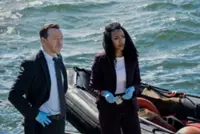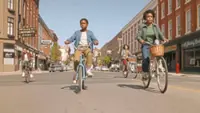‘We have to get out of here. That big guy Steve from Brooklyn says he wants his star-spangled costume back.’
There are comic-book conceits that often make us stop and think about their real-world viability.
For example, would an organisation of “evildoers” (and don’t they just hold to different ideologies than their self-styled “superhero” opposites?) actually regard themselves as evil to the point of reflecting that trait in their names?
8 10
Summary:
All this and a giant robot, too!





